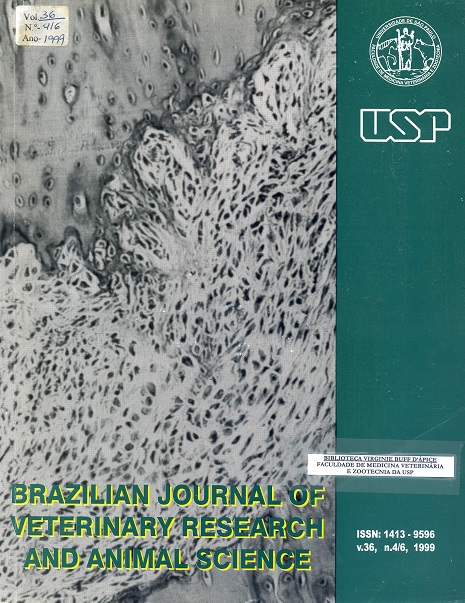Puncture-biopsy technique for histopatological diagnostic in ovine fascioliasis
DOI:
https://doi.org/10.1590/S1413-95961999000400009Keywords:
Fasciola hepatica, Fascioliasis, Diagnosis, OvineAbstract
In order to evaluate the efficacy of puncture-biopsy technique on the diagnostic of acute, sub-acute or chronic fasciolosis in sheep raised in epidemiological region, an investigation involving two groups of animals was carried out. Group 1 was made up by 65 sheep, which were later slaughterhouse, and Group 2 was made up by 12 animals, which were randomly selected from a single flock from the same area. From the sheep belonging to the Group 1, besides the biopsies, they were sampled faeces and all the livers were evaluated at slaughterhouse. Yet the animals that made up Group 2, besides biopsied, were sampled aiming F. hepatica ova detection under coprologic test. The biopsy’s material was histologically processed and stained by H.E. and Masson methods. All the animals that were positive for F. hepatica under coprologic test, as well as some that were negative, were positives to puncture-biopsy methodology. This technique proved to be an excellent toll for the diagnostic of F. hepatica infection, either acute, sub-acute or chronic. This method was also considered to be more sensitive than faecal single test, mostly in areas which parasite prevalence is known.Downloads
Download data is not yet available.
Downloads
Published
1999-01-01
Issue
Section
VETERINARY MEDICINE
License
The journal content is authorized under the Creative Commons BY-NC-SA license (summary of the license: https://
How to Cite
1.
Scherer PO, Pile EA, Serra-Freire NM da, Schäffer GV. Puncture-biopsy technique for histopatological diagnostic in ovine fascioliasis. Braz. J. Vet. Res. Anim. Sci. [Internet]. 1999 Jan. 1 [cited 2024 Apr. 18];36(4):219-22. Available from: https://www.revistas.usp.br/bjvras/article/view/5750





